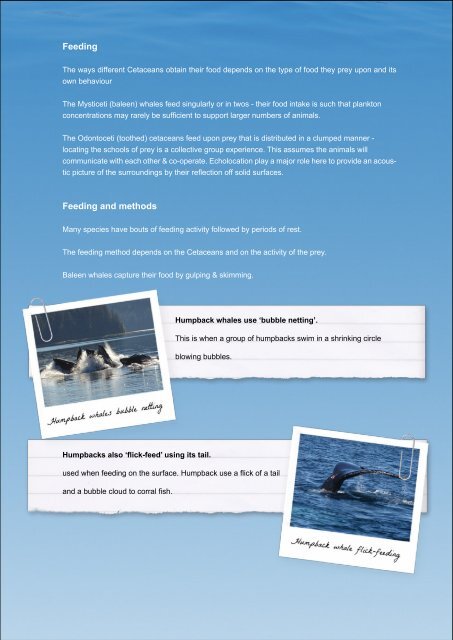Download our induction pack here - Atlantic Whale Foundation
Download our induction pack here - Atlantic Whale Foundation
Download our induction pack here - Atlantic Whale Foundation
You also want an ePaper? Increase the reach of your titles
YUMPU automatically turns print PDFs into web optimized ePapers that Google loves.
Feeding<br />
The ways different Cetaceans obtain their food depends on the type of food they prey upon and its<br />
own behavi<strong>our</strong><br />
The Mysticeti (baleen) whales feed singularly or in twos - their food intake is such that plankton<br />
concentrations may rarely be sufficient to support larger numbers of animals.<br />
The Odontoceti (toothed) cetaceans feed upon prey that is distributed in a clumped manner -<br />
locating the schools of prey is a collective group experience. This assumes the animals will<br />
communicate with each other & co-operate. Echolocation play a major role <strong>here</strong> to provide an acoustic<br />
picture of the surroundings by their reflection off solid surfaces.<br />
Feeding and methods<br />
Many species have bouts of feeding activity followed by periods of rest.<br />
The feeding method depends on the Cetaceans and on the activity of the prey.<br />
Baleen whales capture their food by gulping & skimming.<br />
Humpback whales use ‘bubble netting’.<br />
This is when a group of humpbacks swim in a shrinking circle<br />
blowing bubbles.<br />
Humpbacks also ‘flick-feed’ using its tail.<br />
used when feeding on the surface. Humpback use a flick of a tail<br />
and a bubble cloud to corral fish.


